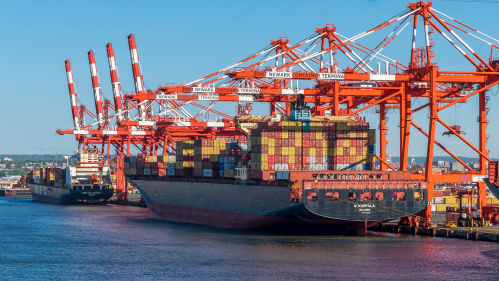Why Did Tens of Thousands of Dockworkers Strike?

Labor expert Will Brucher says the strike proves unions are willing to “flex their economic muscle”
More than 45,000 dockworkers went on strike at 12:01 a.m., snarling container ship traffic and halting operations at the Port of New York and New Jersey and dozens of other ports along the East and Gulf coasts.
Their union, the International Longshoremen’s Association (ILA), remains locked in a bitter contract dispute with the United States Maritime Alliance (USMX), which represents the shipping and terminal companies.
CNN reports it “could become the most disruptive strike to the U.S. economy in decades,” potentially causing product shortages and price hikes in the crucial weeks before the holiday shopping season kicks into high gear.
Will Brucher, an assistant teaching professor in the School of Management and Labor Relations who has studied union organizing at ports, talked to Rutgers Today about the strike and its impact.
Why is this such a big story?
This strike is historic. It’s a reminder that unions can and will flex their economic muscle to respond to their members’ needs. The union’s demands cannot be ignored by the United States Maritime Alliance or the many corporations that rely on the ports for their operations. The industry is enormously profitable, and it is reasonable for International Longshoremen’s Association members to fight for fair wages.
USMX reportedly offered the ILA a 40% wage increase over six years, but the union is pushing for more—up to 77% for the highest-paid workers. Why?
The ILA wants wage increases that reflect the increased cost of living due to inflation and the extra work their members have been doing as a result of the recent boom in shipping.
The West Coast members of the International Longshore and Warehouse Union (ILWU) won a new contract last year with wages that surpass those of the ILA. ILA members want to match or surpass those wages and enhance their benefits. Job security in response to automation is another major sticking point.
How is automation being used in other ports and did it result in job losses?
The ILA broke off negotiations after accusing two companies – APM Terminals and Maersk – of installing an automatic gate at the Port of Mobile, Ala., in violation of their contract.
This is not a new fight. Since cargo containerization (using standardized containers that can be transported by ships, trains and trucks) began in the late 1950s, longshore unions have been concerned with the effect of technological change on employment. Today, the unions worry that new forms of automation from generative AI will lead to job loss and more work for remaining members. They want contract language that protects jobs.
How will the strike affect the flow of consumer goods?
Cargo operations at the East Coast and Gulf Coast ports will immediately cease, but the effects won’t be felt right away. Port operations will continue on the West Coast. In addition, many things Americans consume—including food, paper products and other goods—are produced here in the U.S. and do not have to travel through ports. Still, we live in an import-based economy. As retailers get low on stock, consumers may experience shortages and price increases.
How long do you expect the strike to last?
It’s hard to predict. Most strikes are short, but longshore strikes tend to be longer. The last ILA strike in 1977 lasted 44 days. This is all the more reason for the industry to come back to the ILA with a better offer to forestall these disruptions.


